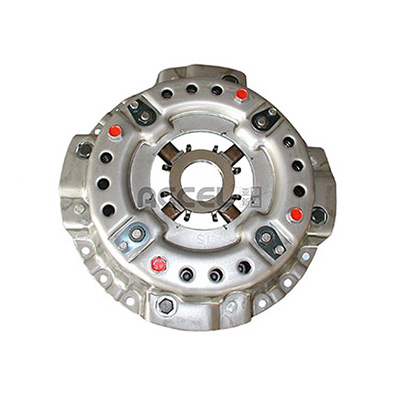- Arabic
- French
- Russian
- Spanish
- Portuguese
- Turkish
- Armenian
- English
- Albanian
- Amharic
- Azerbaijani
- Basque
- Belarusian
- Bengali
- Bosnian
- Bulgarian
- Catalan
- Cebuano
- Corsican
- Croatian
- Czech
- Danish
- Dutch
- Afrikaans
- Esperanto
- Estonian
- Finnish
- Frisian
- Galician
- Georgian
- German
- Greek
- Gujarati
- Haitian Creole
- hausa
- hawaiian
- Hebrew
- Hindi
- Miao
- Hungarian
- Icelandic
- igbo
- Indonesian
- irish
- Italian
- Japanese
- Javanese
- Kannada
- kazakh
- Khmer
- Rwandese
- Korean
- Kurdish
- Kyrgyz
- Lao
- Latin
- Latvian
- Lithuanian
- Luxembourgish
- Macedonian
- Malgashi
- Malay
- Malayalam
- Maltese
- Maori
- Marathi
- Mongolian
- Myanmar
- Nepali
- Norwegian
- Norwegian
- Occitan
- Pashto
- Persian
- Polish
- Punjabi
- Romanian
- Samoan
- Scottish Gaelic
- Serbian
- Sesotho
- Shona
- Sindhi
- Sinhala
- Slovak
- Slovenian
- Somali
- Sundanese
- Swahili
- Swedish
- Tagalog
- Tajik
- Tamil
- Tatar
- Telugu
- Thai
- Turkmen
- Ukrainian
- Urdu
- Uighur
- Uzbek
- Vietnamese
- Welsh
- Bantu
- Yiddish
- Yoruba
- Zulu
අගෝ. . 12, 2024 16:26 Back to list
Understanding the Importance of Automotive Fan Belts and Their Role in Vehicle Performance
Understanding the Importance of Automotive Fan Belts
The automotive fan belt, also known as the serpentine belt or drive belt, plays a crucial role in the functionality and efficiency of a vehicle’s engine. This seemingly simple component is responsible for driving several accessories that are integral to the proper operation of the engine and overall vehicle performance.
What is a Fan Belt?
The fan belt is typically a long, rubberized belt that runs along various pulleys connected to different components of the engine. It connects to the alternator, power steering pump, water pump, air conditioning compressor, and, in older vehicles, the engine fan. Its primary function is to transfer power from the engine’s crankshaft to these components, ensuring that they operate in unison with the engine's performance.
Why is the Fan Belt Important?
One of the primary functions of the fan belt is to maintain engine temperature. The water pump, which circulates coolant throughout the engine, relies on the power supplied by the fan belt. If the belt fails, the water pump stops working, leading to potential overheating and severe engine damage. Additionally, the alternator, which generates electricity for the vehicle’s electrical system and charges the battery, also relies on the belt. A malfunctioning belt can quickly drain the battery, leaving drivers stranded.
In modern vehicles, the serpentine belt design has largely replaced the older multi-belt systems. The serpentine belt is more efficient, requiring less space and reducing the weight of the engine bay. Its continuous loop allows it to drive multiple components simultaneously without the need for several individual belts, simplifying maintenance and reducing the likelihood of a belt failure.
automotive fan belt

Signs of a Worn Fan Belt
Like any automotive component, the fan belt can wear out over time due to exposure to heat, friction, and environmental elements. Regular maintenance and inspections are essential to ensure its longevity. Drivers should be aware of signs that may indicate a worn or failing belt. Common symptoms include squeaking or squealing noises when starting the engine, which can indicate a loose or worn belt. Other signs may include engine overheating, loss of power steering, or issues with air conditioning performance.
Maintenance and Replacement
To maintain an automotive fan belt, drivers should refer to their vehicle's owner manual for recommended inspection intervals. During these inspections, it’s essential to check for signs of wear, such as cracks, fraying, or glazing on the belt’s surface. A professional mechanic can perform these checks and provide advice on whether a replacement is necessary.
Typically, it’s recommended to replace the fan belt every 50,000 to 100,000 miles, but this can vary depending on the vehicle model and the driving conditions. Regular maintenance not only extends the life of the fan belt but also enhances the overall performance and reliability of the vehicle.
Conclusion
In summary, the automotive fan belt is a vital component that affects the overall performance and functionality of a vehicle. By understanding its importance, recognizing the signs of wear, and emphasizing regular maintenance, drivers can ensure their vehicles run smoothly. A proactive approach to automotive care, including attention to the fan belt, will ultimately contribute to a safer and more efficient driving experience.
-
Korean Auto Parts Timing Belt 24312-37500 For Hyundai/Kia
NewsMar.07,2025
-
7PK2300 90916-T2024 RIBBED BELT POLY V BELT PK BELT
NewsMar.07,2025
-
Chinese Auto Belt Factory 310-2M-22 For BMW/Mercedes-Benz
NewsMar.07,2025
-
Chinese Auto Belt Factory 310-2M-22 For BMW/Mercedes-Benz
NewsMar.07,2025
-
90916-02660 PK Belt 6PK1680 For Toyota
NewsMar.07,2025
-
drive belt serpentine belt
NewsMar.07,2025

